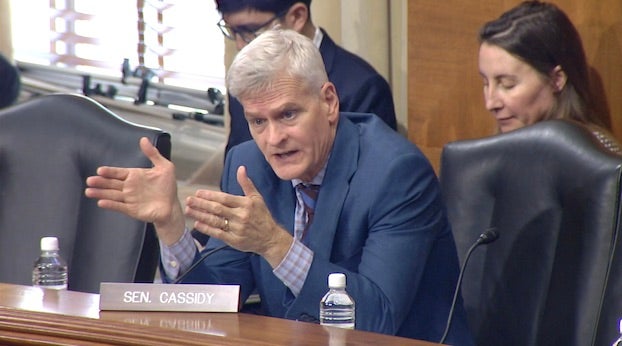Jim Beam column:History of minority districts
Published 7:53 am Thursday, December 2, 2021

- Louisiana's current six U.S. congressional districts that are shown on this map will be reapportioned by the Legislature in 2022.swlarepublicans.org
Blacks who have spoken at public hearings being held prior to the Louisiana Legislature redrawing election lines early next year have made it clear that they believe they are entitled to a second minority member of Congress.
Spokespersons for minority citizens have said they make up a third of the state’s population and one-third of six members of the U.S. House is two. U.S. Rep. Troy Carter of New Orleans is the only Democrat and the only minority member of the state’s House delegation. Carter represents the 2nd Congressional District.
Getting a second minority district may not be impossible, but it will be extremely difficult. It depends on where minority citizens are living.
Trending
Louisiana did have a second minority member of Congress in the early 1990s. Current state Sen. Cleo Fields, D-Baton Rouge, was elected to the 4th Congressional District seat in 1992 and 1994.
The Louisiana Legislature redrew the 4th District lines after the 1990 U.S. Census and it was described as “a skinny, 600-mile-long, Z-shaped squiggle.” Fields won the 1992 general election.
Citizens filed suit in 1992 and won that round. The Legislature redrew the 4th District lines. Fields’ new district slashed across 15 parishes from Shreveport past Baton Rouge for a 55 percent minority representation.
The new district was more compact than the 62 percent minority district from which he was elected in 1992. He was re-elected in the 1994 primary.
Republicans weren’t asleep while all of this was happening. They soon realized that each time a minority district was created it gave them control of the mostly white districts that were left. And whenever majority-black districts were dissolved, many black voters were moved back into districts where Republicans had seized control.
Redistricting began to change after the U.S. Supreme Court in 1995 threw out a Georgia U.S. House redistricting plan with a 5-4 ruling. It said political boundaries couldn’t be drawn for the sole purpose of boosting minority strength.
Trending
Fields said, “There used to be a time that the 14th Amendment, the equal protection clause, was used as a shield to protect minority voters. Now, the court takes the same amendment and uses it as a sword to injure minority voters.”
A federal court redrew Louisiana’s congressional boundary lines in January of 1996, eliminating Fields’ 250-mile-long majority black district because it was drawn with an unconstitutional emphasis on race.
The map drawn by a three-judge U.S. court panel divided the state along roughly horizontal and vertical lines, leaving U.S. Rep. William Jefferson’s 1st District the only one with a majority of minority voters.
The judges said, “For yet a third time, we are called on to review the constitutionality of a congressional redistricting plan … And for yet a third time we conclude — just as we have concluded twice before” that the plan violates the Constitution’s guarantee of equal protection.
Richard Ieyoub, who was state attorney general at the time, decided to appeal the court’s decision. “Louisiana, unlike Georgia, had a reasonable basis for believing that a second majority-minority district was required under the Voting Rights Act,” Ieyoub said.
One of the plaintiffs who sued to do away with the Fields district said, “Our case is much stronger than the Georgia case … We have every confidence in the world that the Supreme Court is going to agree with the federal court in Shreveport. The state is about to waste another couple of millions of dollars.”
Ieyoub in June of 1996 said he wanted to study a U.S. Supreme Court ruling that threw out predominantly minority congressional districts in Texas and North Carolina. The justices said the states unlawfully made race the main factor in drawing the boundaries.
Eventually, the Ieyoub plan to appeal was dropped. And the U.S. Supreme Court on June 24, 1996, voted 8-1 to hold Louisiana’s congressional elections that fall under the plan drawn up by the federal court panel. The Legislature had also adopted an identical reapportionment plan.
Republican Jim McCrery, who represented the 4th District from 1988 to 1992, was elected again in 1996 and served until 2010.
The effort to create that second minority congressional district didn’t last long, and whether another one can be created next year is unknown at this point. However, as someone suggested back in 1995, if that isn’t possible, legislators should at least create election districts with minorities large enough to give them greater political influence than they currently enjoy.
As I said in 1995, it makes sense to me.





